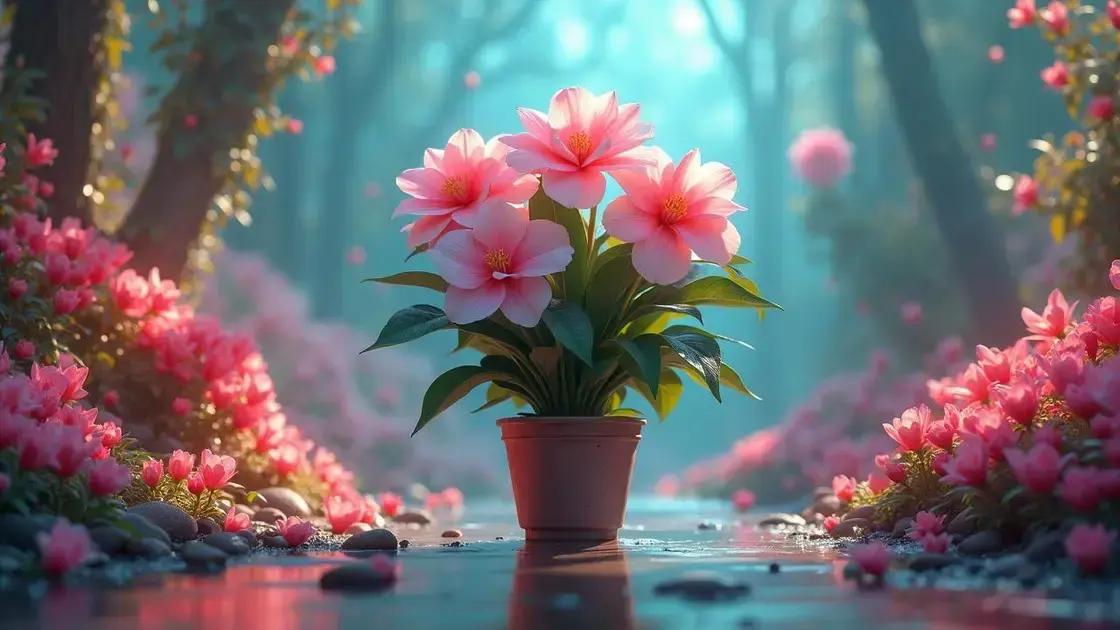How to Care for Gardenia Plant in a Pot: 7 Powerful Tips for Success
How to care for gardenia plant in a pot? If you’re wondering about the best practices to ensure your gardenia thrives, you’re in for a treat. These fragrant flowers can bring a delightful aroma to your garden or home, but they have specific needs that must be met. In this post, you’ll discover key insights and tips that will guide you through the essentials of keeping your gardenia healthy, happy, and blooming beautifully.
Table of Contents
ToggleEssential watering techniques for potted gardenias
Essential watering techniques for potted gardenias play a crucial role in their overall health and vitality. Proper watering ensures the soil remains adequately moist, which encourages growth and blooming. Here are some key points to consider:
- Check soil moisture regularly: Before watering, use your finger to check the top inch of soil. If it feels dry, it’s time to water.
- Water deeply: When you do water your gardenia, ensure you water thoroughly until water drains from the bottom of the pot. This encourages deep root growth.
- Drainage is key: Use pots with drainage holes to prevent water from pooling at the bottom, which can cause root rot.
- Watering frequency: Adjust the frequency based on the season—gardenias generally require more frequent watering in the warmer months and less during winter.
- Humidity levels: Gardenias thrive in humidity. Consider misting the leaves or placing a humidity tray under the pot.
Remember, the how to care for gardenia plant in a pot information also extends to water quality. Using distilled or rainwater is ideal, as tap water may contain chemicals that could harm your gardenia.
Signs of Overwatering
Understanding the signs of overwatering is just as important as knowing how to water correctly. Look out for:
- Yellowing leaves, which can indicate root rot.
- Wilting, despite wet soil.
- Mold or algae growth on the surface of the soil.
Watering tips during different stages
During the growing season, ensure your gardenia receives plenty of water, while in the dormant season, reduce the watering amount:
- Spring and summer: Water every few days, as the plants are actively growing.
- Fall: Gradually reduce the frequency as growth slows.
- Winter: Water less frequently, allowing the top inch of soil to dry out between waterings.
For those interested in a deeper dive into maintaining indoor plants, consider exploring indoor gardening techniques that can complement your gardenia care.
Ideal sunlight requirements for gardenia plants

Understanding the ideal sunlight requirements for gardenia plants is essential for their overall health. These beautiful plants thrive in environments that mimic their natural habitat, which is bright yet filtered light. Proper sunlight exposure is key to achieving splendid blooms and vibrant foliage.
- Direct vs. indirect sunlight: Gardenias prefer bright, indirect sunlight. Too much direct sun can scorch the leaves, while too little can hinder flowering.
- Optimal light conditions: Aim for about 4 to 6 hours of light per day. Morning sun is ideal, as it’s less intense.
- Signs of insufficient light: If your gardenia is not flowering or has yellowing leaves, it may not be receiving enough light.
- Adjusting for indoor environments: Use sheer curtains to filter light if placing your gardenia near a window.
Best locations for gardenia plants
When determining the ideal spots for your gardenias, consider:
- South-facing windows: These receive the most light, making them excellent for gardenias.
- East-facing windows: Provide gentle morning light, perfect for starting the day.
- West-facing windows: Can be too harsh for some gardenias, so consider filtering light with curtains.
- Grow lights: For homes with limited natural light, consider using grow lights to supplement.
Adjusting sunlight exposure through the seasons
Your gardenia’s sunlight needs might change according to the seasons:
- Spring: Position your gardenias to receive maximum light as they begin their active growth phase.
- Summer: Watch out for too much direct sunlight; you may need to adjust their location.
- Fall and winter: They may require less light during these seasons, so monitor their growth and adjust accordingly.
For in-depth tips on maintaining indoor plants, be sure to check out exploring indoor gardening techniques that can support your gardenia’s health.
Common gardenia problems and how to fix them
Common gardenia problems and how to fix them can be essential knowledge for any plant enthusiast. Gardenias, while beautiful, can face challenges that affect their growth and overall health. Being aware of these issues will allow you to take action and restore your gardenia to its prime condition.
Identifying typical gardenia issues
Here are some of the most frequent problems that gardenia plants encounter:
- Leaf yellowing: This can occur due to overwatering, underwatering, or nutrient deficiencies.
- Flower drop: Often happens due to environmental stress or lack of sunlight.
- Pests: Gardenias are susceptible to pests like aphids, scale insects, and spider mites.
- Blackened leaves: This can indicate the presence of sooty mold, often linked to pest infestations.
- Root rot: Occurs from overwatering or poor drainage.
Effective solutions for gardenia problems
Now that you know the common gardenia problems, here are the steps to fix them:
- Leaf yellowing: Assess your watering routine. Ensure consistent moisture without soaking the roots. Consider using a balanced fertilizer to provide essential nutrients.
- Flower drop: Move your gardenia to a location with appropriate light conditions, preferably bright, indirect sunlight.
- Pests: Inspect the plant regularly. Apply insecticidal soap or neem oil to control and eliminate pests.
- Blackened leaves: Identify the source of the sooty mold and treat any underlying pest issues before cleaning the leaves gently with a damp cloth.
- Root rot: Check the pot’s drainage; repot the plant in fresh, well-draining potting mix if necessary.
Preventive measures for gardenia care
To avoid future problems, consider the following preventive measures:
- Provide consistent watering, ensuring the soil is moist but not waterlogged.
- Fertilize regularly during the growing season with a fertilizer designed for acid-loving plants.
- Monitor the humidity levels around your gardenias, as they thrive in higher humidity.
For further insights and tips on maintaining healthy plants, check out exploring indoor gardening techniques that will enhance your knowledge and skills.
In conclusion
Caring for gardenia plants in pots requires attention to various factors, including proper watering techniques, ideal sunlight conditions, and tackling common problems effectively. By understanding their specific care needs, you can nurture your gardenias to thrive beautifully.
Remember, these fragrant plants can truly enhance your space when given the right environment and care. For more insights, check out tips on enhancing your indoor garden that can further support your gardening journey.

